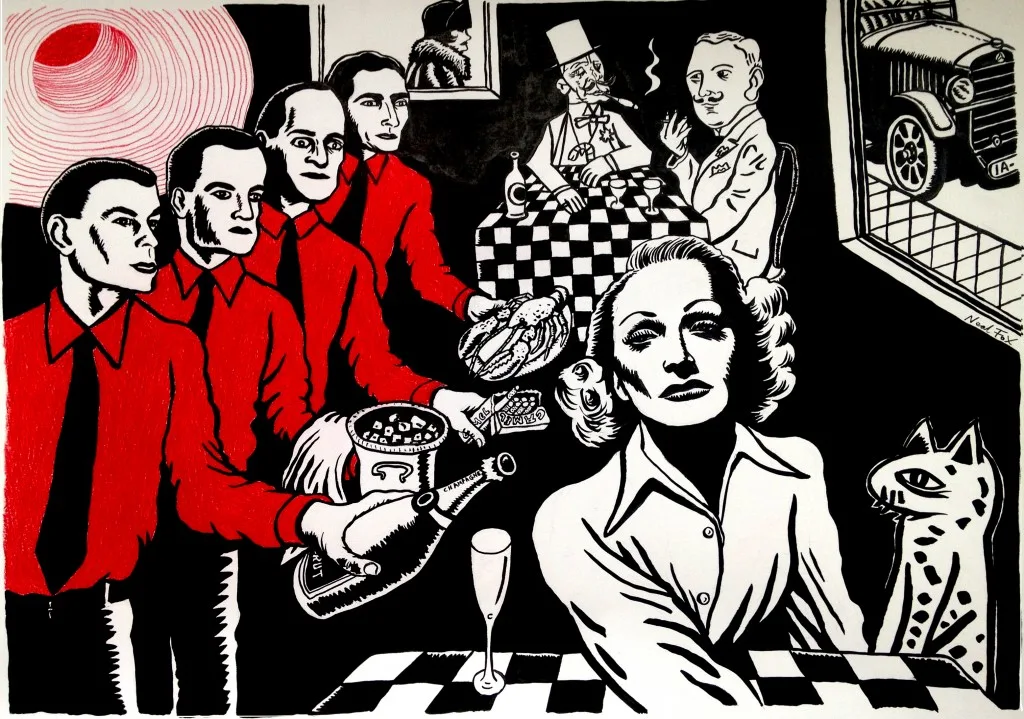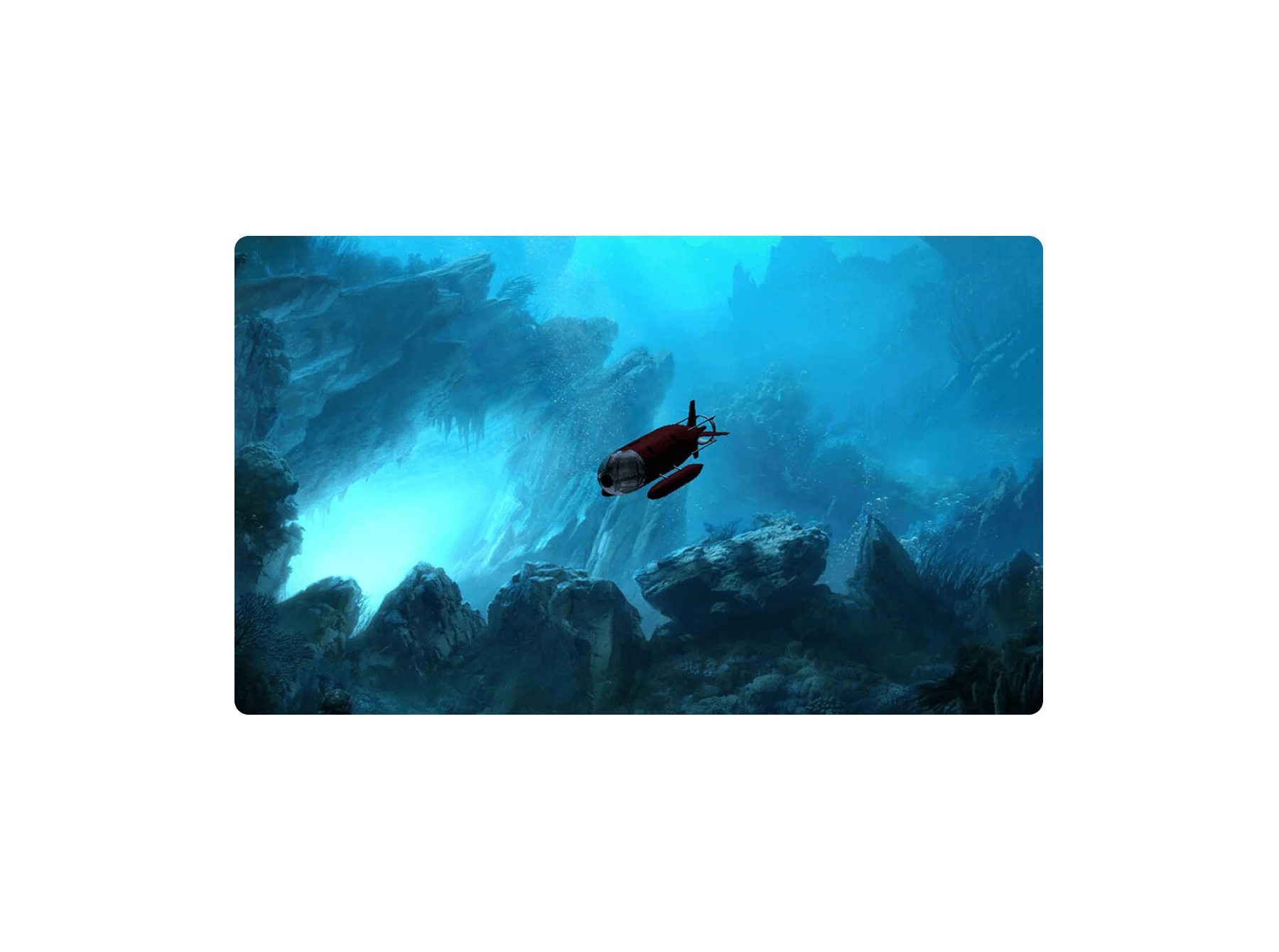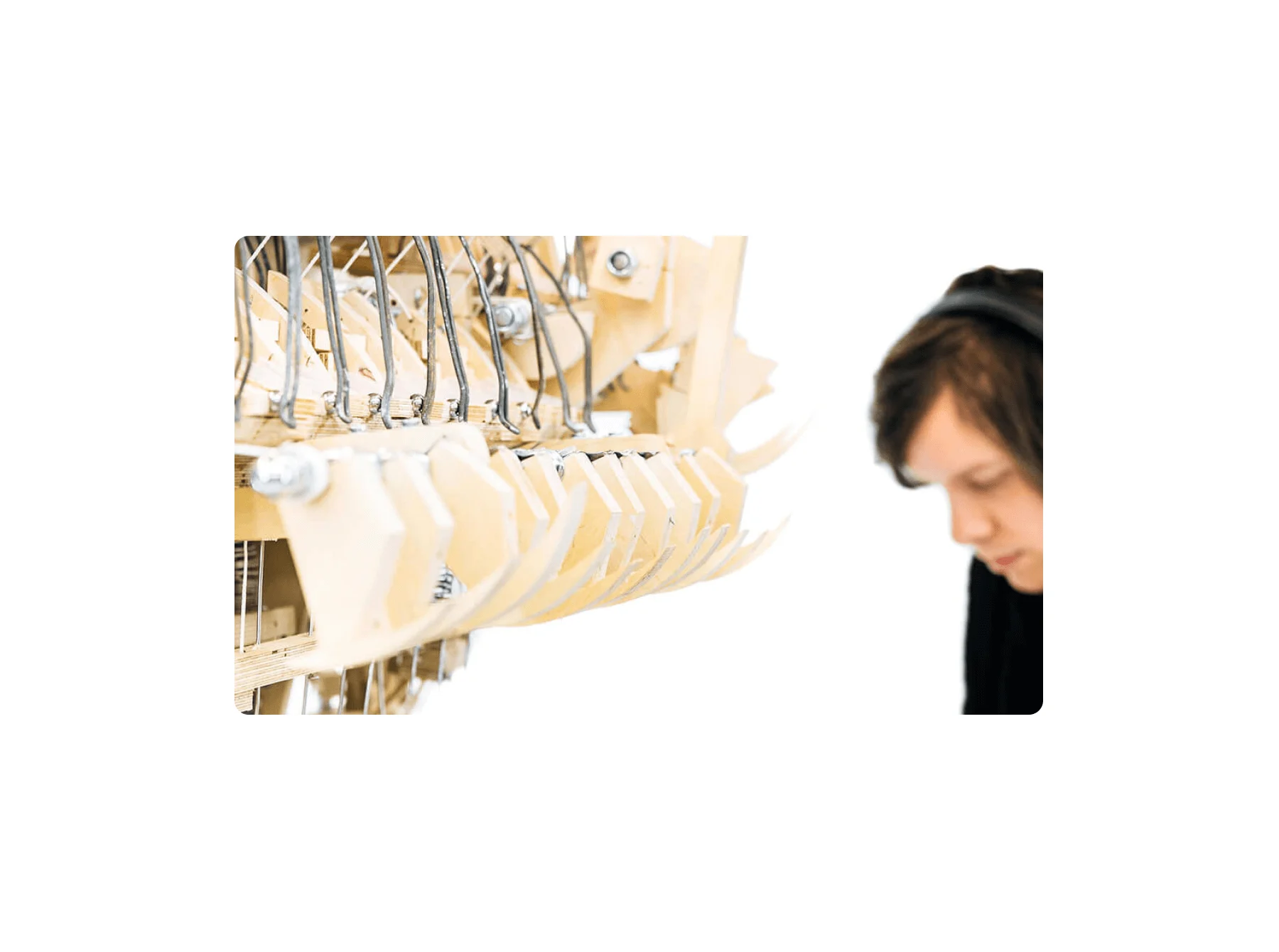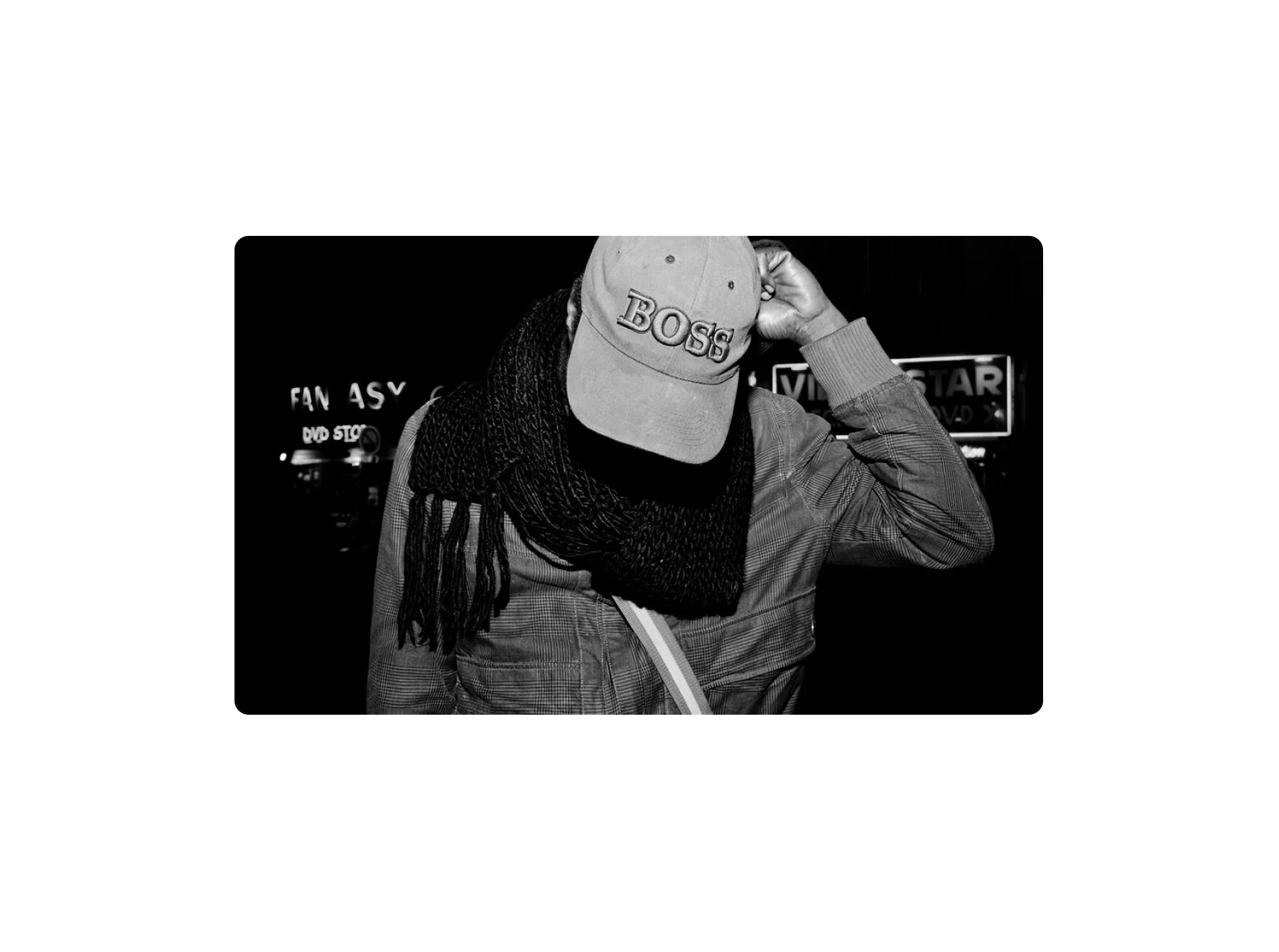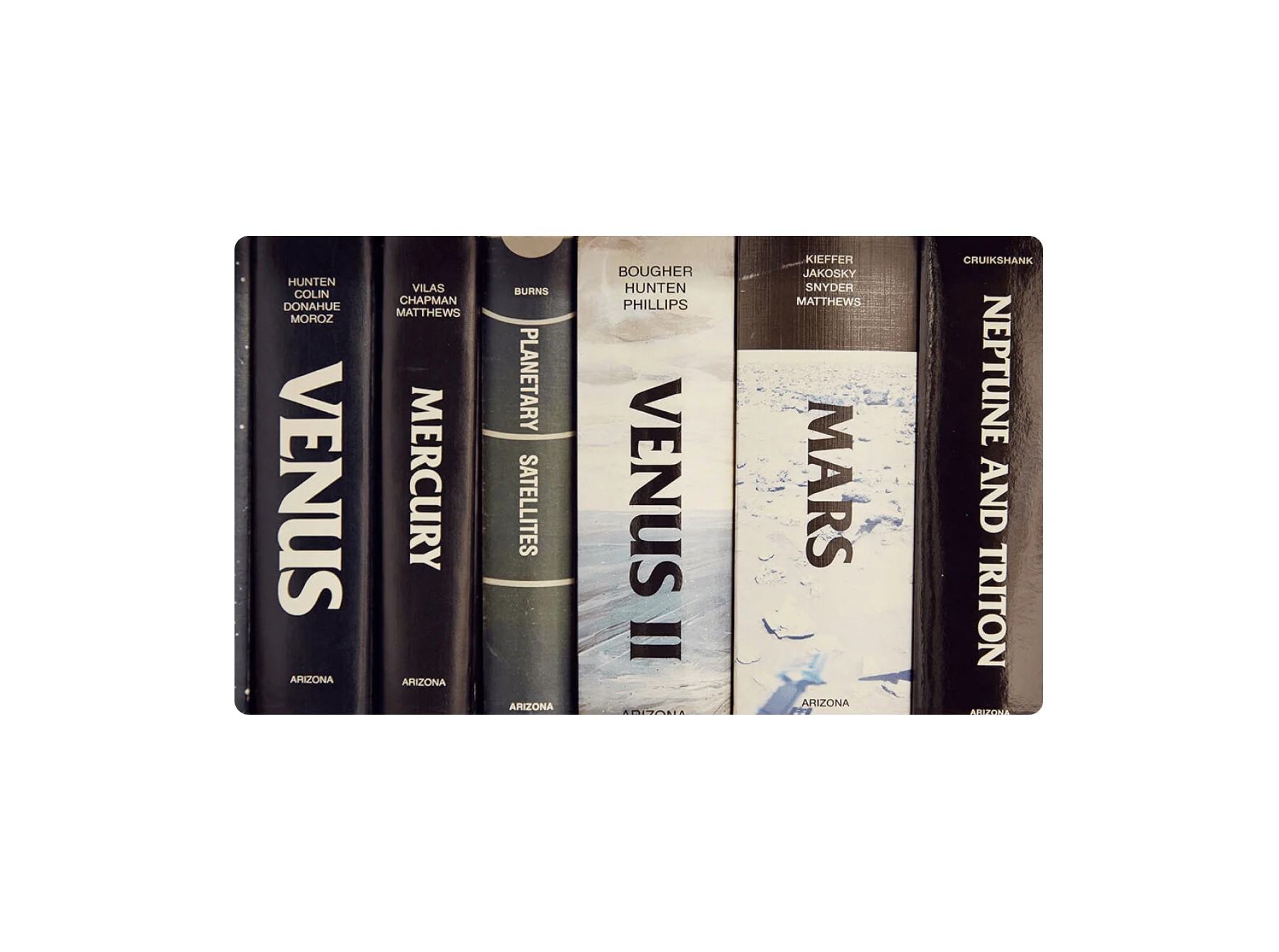
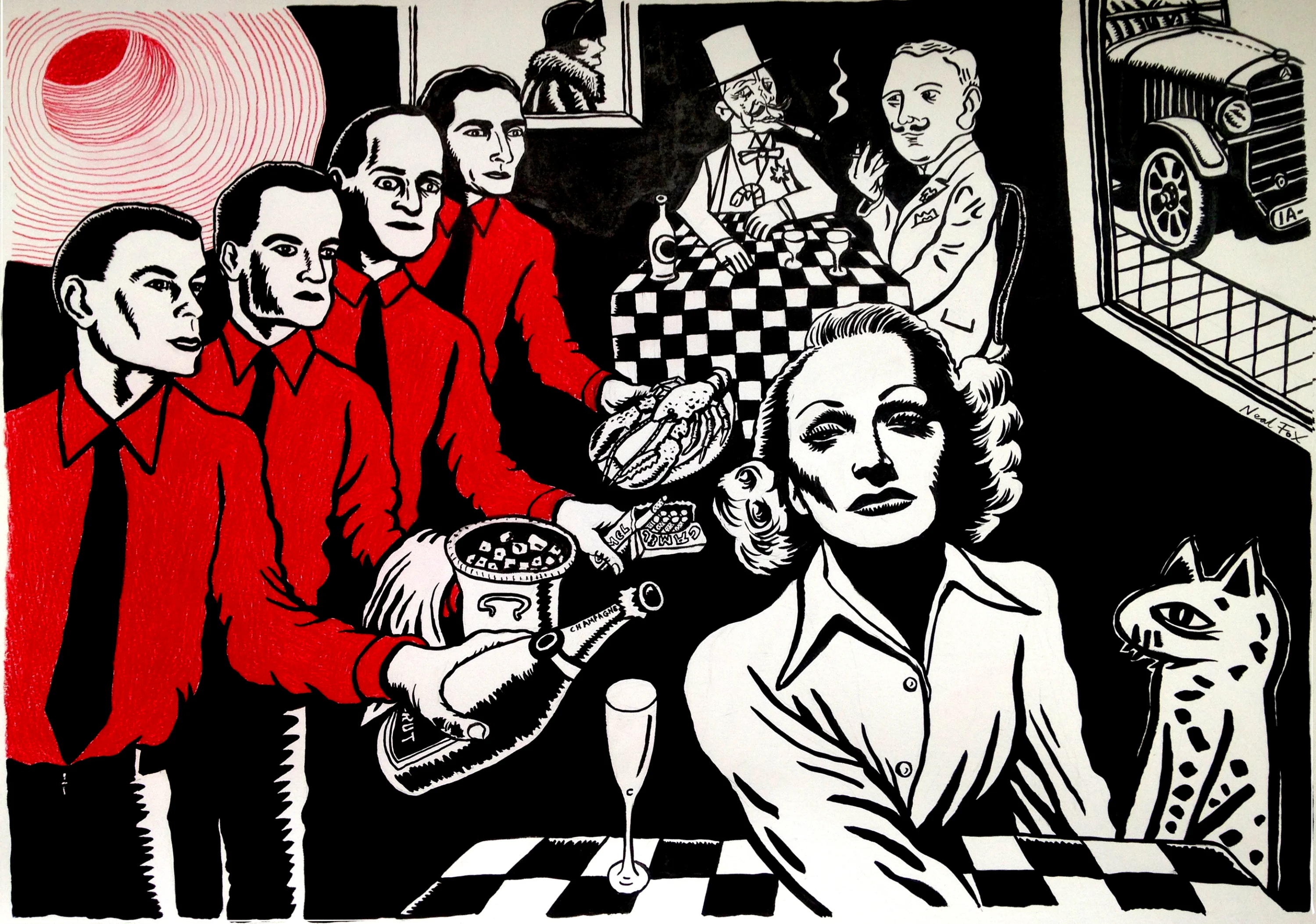
Once described as the "Willy Wonka of science," Nelly Ben Hayoun is a force of nature. Whether she's creating dark matter in her kitchen sink, or organizing NASA employees into an orchestra, she doesn't let anything get in her way.
To mark her We Can Do It Campaign, Nelly introduced us to a set of creatives who reflect her can-do attitude.
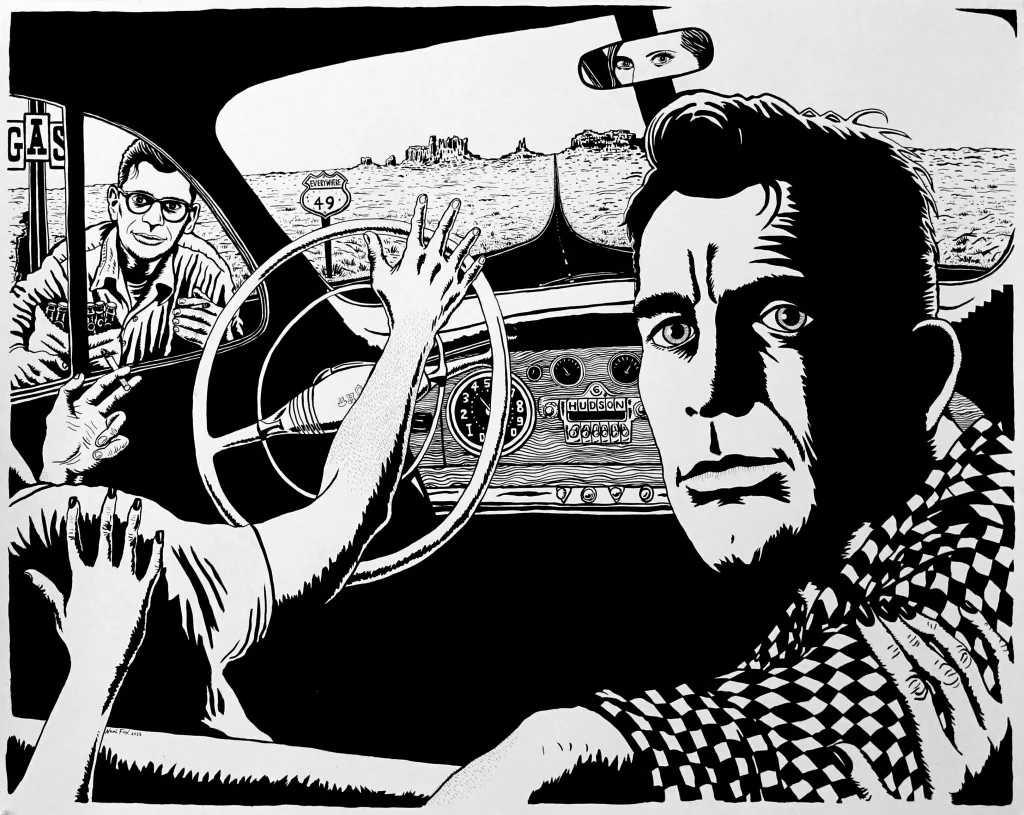
Neal Fox’s illustrations aren’t easy to describe. They mix punk, paranormal and pop culture sensibilities and they are surreal, strange and silly in equal measure. His grandfather John Watson – an incredibly colourful character – is our guide to Neal’s fantastical world.
Dressed in a black hat and an overcoat he leads us through Neal’s creations, each of which hum with their own energy, be that hectic and chaotic or tense and unnervingly calm. Neal is also one of the founders of the Le Gun collective, a group of five illustrators and two graphic designers who have been making work together since 2004.
Nelly has a longstanding interest in the punk movement, and how it combined music and social action, and you can see why she is drawn to her fellow Royal College of Art (RCA) alumnus’ work.
What was it like studying in London in the early 2000s? What was the creative energy like in that place at that time?
I was at the RCA which was kind of a bubble, but a really great bubble to be in. You ended up being there almost 24 hours a day with a lot of unusual people who were really into what they were doing.
Then after I left along with the other guys from Le Gun I started to delve into the underbellies of Soho and the East End. We got to know an interesting array of characters by putting on art shows in found spaces like a basement on Brick Lane, a former school, pubs and clubs, a disused cobblers.
There was a good DIY creative energy. I think that it’s becoming more difficult now because everything is getting so expensive, a lot of my friends are talking about leaving London.
It’s pretty hard to be a young person in London now if you don’t have a trust fund. My studio rent might be put up 65% this year. It’s going to destroy the soul of London if it carries on.
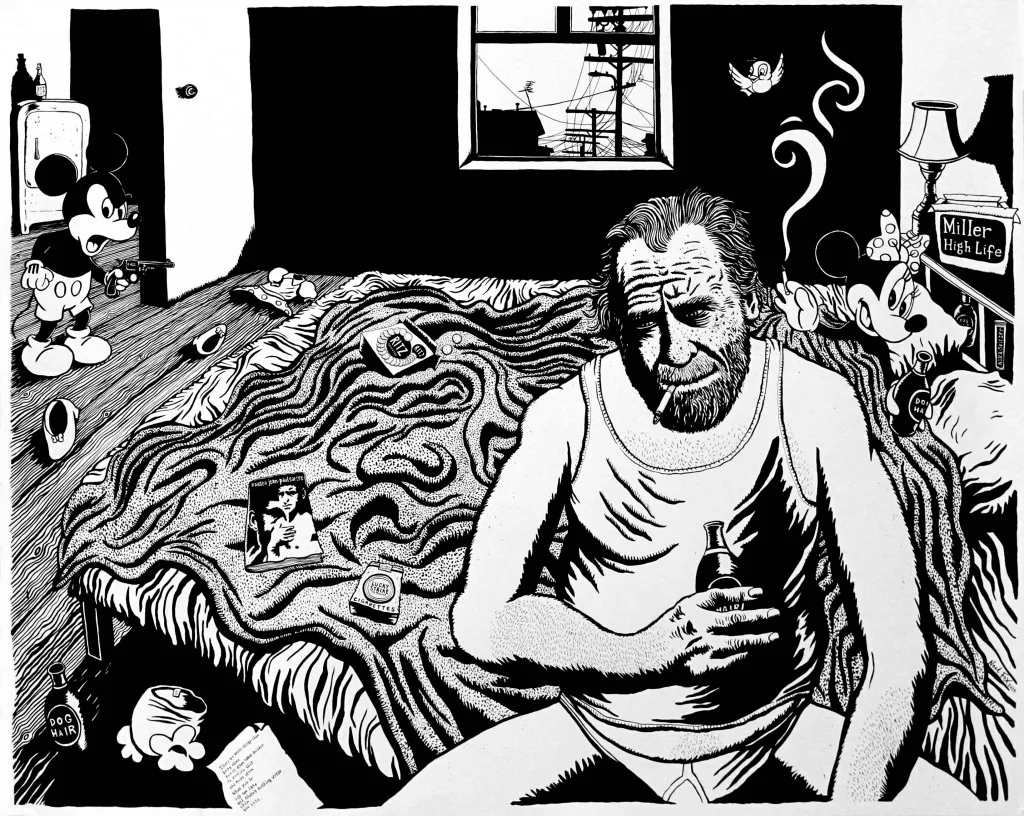
What brought the members of Le Gun together? What things do you share as a group in terms of creative vision?
We were all on the Communication Art and Design course together at the RCA. There was a special bunch of people on that year, doing weird and eccentric drawings. Me and my friend Robert Rubbish decided it would be cool to publish a magazine which showed the kind of stuff we were seeing.
We also started drawing together and it gradually developed into a core group of us working together all the time. We’ve developed a way of drawing so that even though seven of us are collaborating, it looks like the work of one artist. Then we like to turn the drawings into three dimensional installations.
Lately we’ve been going around art schools doing collaborative drawings with big groups of students. We are trying to take it all bit further this summer by making a temple of drawing as part of the exhibition Utopia 2016 at Somerset House. Probably the one thing we all have in common is a sense of the absurd.
Can you tell us about the role your grandfather plays in your work? He was obviously a massive character, is that your own memories of him or is that a picture you have built up from others?
I’ve always put him in my drawings, although these days he’s more in the background. I see all my work as one epic story with my granddad’s ghost on a psychedelic bender through time and space.
He died when I was four, but I always heard stories about him. My gran died recently and she would tell me all about him, and her house was full of black and white photos of his life. He was a bomber pilot in World War Two and then wrote a great book about his experiences called Johnny Kinsman. He also wrote and published hundreds of hard-boiled detective novels under different pseudonyms. Later he became a chat show host in Scotland interviewing people like Cary Grant and Walt Disney, and then he was a publisher in Soho publishing books like Junkie.
Anyway my gran was a real character too and a storyteller; she brought him to life in my mind. He became a kind of mythical character.
I met a native American from the Blackfoot tribe in a Berlin jazz bar last year and we talked a lot about our grandfathers and how they are spirit guides to us. It’s something which has been lost in our society maybe. Now I wonder if my gran will be one too.
The cultural references in your work are very eclectic – is there a common thread between them do you think?
It’s all a kind of crazy cosmology which has evolved around the idea of my granddad’s spirit on a mythical adventure. I’m interested in the idea of artists as the magicians of our time, bringing mythology to the people. In a way the pictures are like old fashioned history paintings, but I like to mix things up and make the impossible possible, mess around with time and space.
On a good day when I’m drawing I go into a bit of a trance and I’m in these places meeting these characters, in a car in the desert with Jack Kerouac or a bar in Berlin with David Bowie. They are all totem figures, heroes and anti-heroes who represent ideas and a way of life – the way my grandad does to me personally – but to the wider culture.




